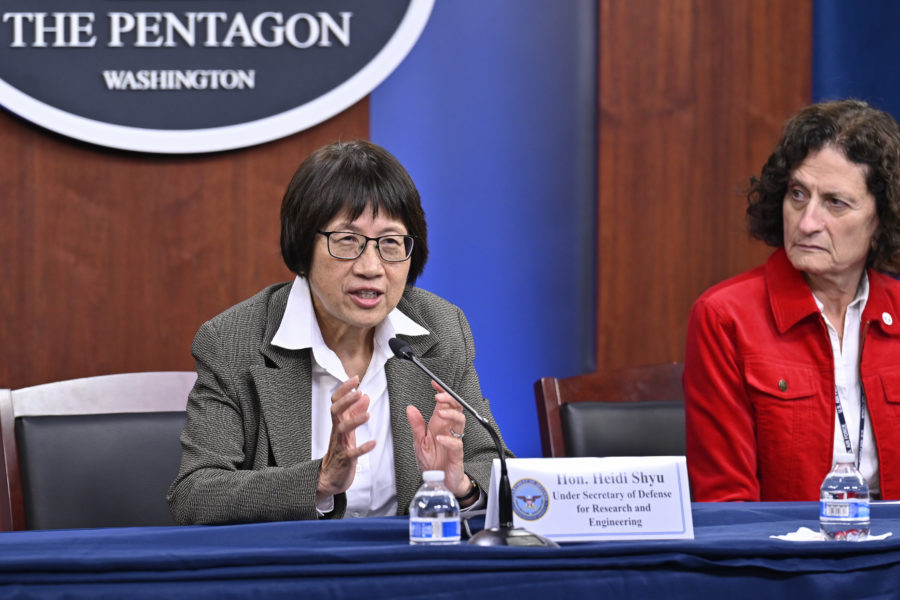Joint capabilities and maturing technologies topped the list of priorities as Defense Department leaders discussed the Pentagon’s fiscal year 2024 science and technology budget request at a National Defense Industrial Association forum April 13.
“Everything we’ve been doing is very much focusing on the joint warfighting capability and what we need to do to fight as a joint force,” said Heidi Shyu, undersecretary of defense for research and engineering.
The 2024 Research, Development, Test, and Evaluation (RTD&E) budget request, she noted, is 12 percent higher than 2023 at $145 billion. Of that total, the Air Force has the biggest piece at 32 percent, while the Space Force is at about 13.3 percent.
The S&T portion of the budget, which includes basic research, applied research, and advanced technology development has seen a surge in funding in recent years, and that will continue, Shyu saud.
“We are at … almost $17.8 billion, which is 8.3 percent over last year,” she noted.
Maj. Gen. Heather Pringle, commander of the Air Force Research Laboratory and technology executive officer for both Air Force and Space Force, said the services did pretty well in the budget throughout all of their eight RDT&E authorities. Total funding, she noted, was $49 billion.
“As far as what the Air Force Research Lab does in support of the Air Forces and the Space Force, we have enacted in the basic science portfolio, it’s about 2 percent of that overall RDT&E budget; applied research is 4 percent; and the [advanced technology development] budget is 2 percent,” she said, noting that it’s a small portion of the overall RDT&E budget. “We have some great seedlings of innovation and science ideas in our [basic science] portfolio that we grow and mature, with more robust capabilities and more robust investments in [the others].”
Pringle added that AFWERX and SpaceWERX will have a little more than $1 billion for small business research.
In addition to the budget itself, Pringle also addressed the challenges inherent in budget allocations and where funds and talent can be best utilized while determining future threats.
“We also know that the technological competition is here and it’s something that we need to plan for and get ahead of,” Pringle said. ”So the two sides of the coin—the military competition and the technological one—is how we assess the environment and, in turn, respond and plan and try to get ahead of the trends that we see out there.”
She reiterated Secretary of the Air Force Frank Kendall’s seven operational imperatives and noted that they are instrumental in the Air Force’s success moving forward.
“We’re trying to break this operational landscape for the Air Force to be successful, and we’re trying to translate it into the component technologies, so that we can start to think about what’s the science that we need to accomplish now in order to achieve those operational imperatives in the future,” Pringle said.
Much of this is knowing which questions must be asked now and what technologies should the force explore today to be successful in the next decade or more.
“Translating that battle space to technology space, we’ve really homed in on the common language of functional capability areas as our common language,” she said. “This enables us to speak to warfighters in a more specific way in a language that they understand, but it also translates multiple domains.”
Ultimately, she said, the Air Force S&T enterprise wants to see missions as Guardians and Airmen see missions, and use that to make decisions about how to invest in the future.
“We’ve been on this journey for the past little over a year, and we’re starting to use that to drive what our investment portfolio is, and so in the coming months, you’re going to see a lot more about how this translates,” Pringle added. “But I wanted to give you a sense of these priorities because these will stand the test of time.”
